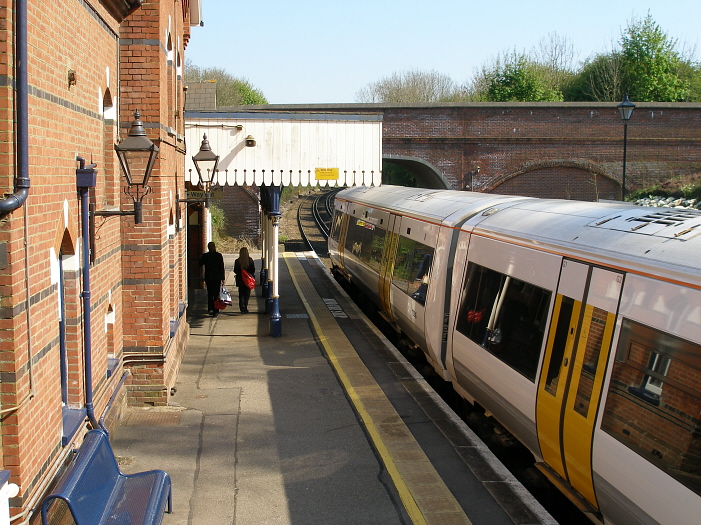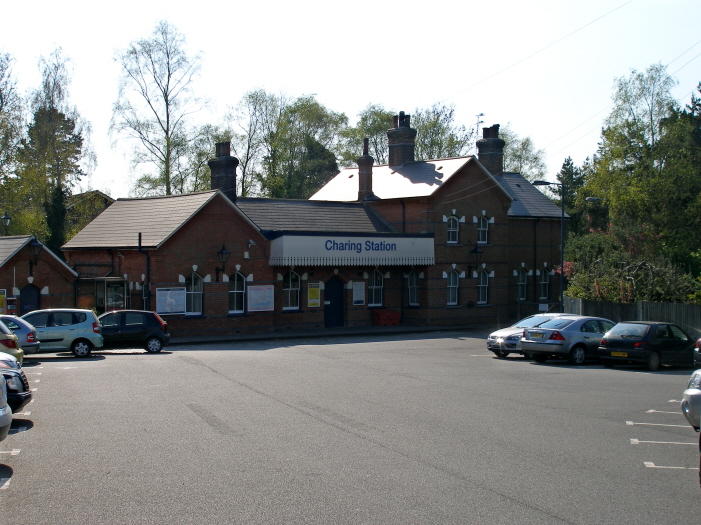
Charing changed little under SR ownership; minor alterations included the modification of the existing Victorian diamond-shaped lamppost heads. These were replaced with Swan Neck examples, but the original Barley Twist wrought-iron posts retained. Indeed, during the majority of the SR’s existence, modernisation of the South Eastern section was generally concentrated on the ex-SE&CR suburban lines. This primarily involved route electrification of the ‘’commuter’’ network, and under SR auspices, third rail reached as far into Kent as Sevenoaks, Maidstone, and Gillingham. Thus, it was under British Railways ownership that layout rationalisation, in addition to service improvement, occurred. The Kent Coast Electrification sought to widen the scope of the third rail laid during the SR’s suburban modernisation programme. During 1961, this was extended from Maidstone, through to Ashford, a limited electric service commencing over the whole extent of the ex-LC&DR route on 9th October of that year. The full electric timetable came into use on 18th June of the following year, coinciding with complete electric running on the ex-SER trunk line via Tonbridge. The advent of third rail in 1961 led to the track foot crossing at Charing being made redundant: an Exmouth Junction-manufactured prefabricated concrete footbridge was brought into use to the immediate west of the main station building.
Steam may have gone, but goods traffic at Charing continued to be handled, such facilities not going out of use until 16th May 1964. Furthermore, most of the line escaped having its original signalling replaced during the 1961 scheme – only Lenham lost its original Saxby & Farmer cabin to a ‘’power box’’ (although Harrietsham’s cabin would later be decommissioned in 1972). Lenham’s power box had been installed to control a revised layout, which now included an electrified loop through the former goods yard area to permit ‘’fast’’ services to overtake stopping trains stabled in the ‘’down’’ platform. Semaphore signals were retained throughout, but such was set to change in 1984. During this year, the scope of the Maidstone East Panel was increased. At this time there were four Saxby & Farmer cabins remaining in use: Bearsted, Hollingbourne, Charing, and Hothfield. On 14th April 1984, all except one of these signal boxes went out of use. Hothfield, which had lost its station in 1959, retained its cabin for nearly a year longer, it being decommissioned as a ground frame in February 1985. It would appear to be during this period that Charing’s waiting shelter lost its glazing, the window arches subsequently being bricked up.
During 1991, the line via Maidstone East was prepared for taking Channel Tunnel freight services. These incorporated oversized container vehicles which were too large to fit under existing arched bridges, in addition to being prone to hitting platform structures. Consequently, several bridges witnessed their arches rebuilt to a wider profile, complete with a concrete lining. Furthermore, a number of platform canopies – including that of the waiting shelter at Charing – had chunks cut out to accommodate the larger vehicles. There have been further changes to the site since. Circa the year 2000, Charing was reacquainted with some past Victorian charm: traditional diamond-shaped lanterns were installed along the platforms, treated with an attractive coat of black paint. It is worth noting that these are nearly twice the height of their LC&DR predecessors, and examples are attached to the platform-facing elevation of the main building, in addition to featuring upon the concrete footbridge.

A westward view from the road bridge shows the vacant land behind the ''up'' platform which was once host to a lengthy refuge siding. The goods yard formerly occupied the land on the right, beyond the station building, marked by the trees. © David Glasspool

An eastward view from the footbridge steps includes Class 375 No. 375816, immediately after passengers had disembarked, waiting for the ''off'' to Ashford. This scene affords a close look at the attractive lanterns, and also reveals the rebuilt bridge arch, this having been done to allow the passage of oversized container vehicles on Channel Tunnel freight workings. © David Glasspool

The main building at Charing is a slightly more substantial red-brick version of the main building at Sevenoaks Bat & Ball. Note on the extreme left the small pitched-roof appendix of the station building. This appears to be a common LC&DR feature. Indeed, Charing's plainer cousins on ''Chatham'' main line at Sole Street and Adisham (to name but two) share this characteristic. The trees and shrubs on the right mark the former goods yard site, this now acting as a garden. © David Glasspool
Return to the Kent Rail Homepage or alternatively, check for Updates.
Website & Copyright information - Links - Contact the Webmaster